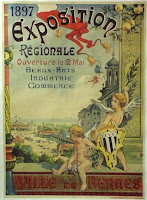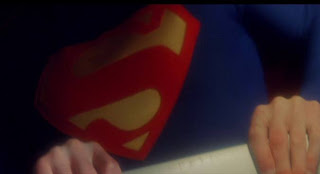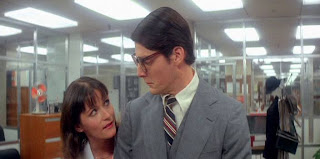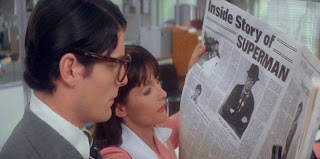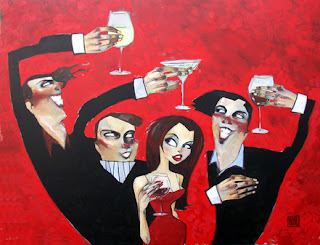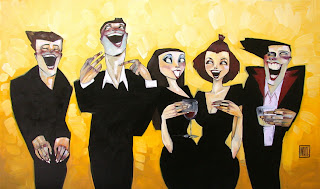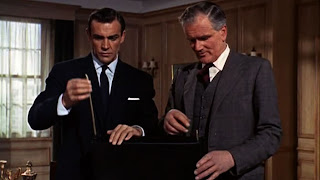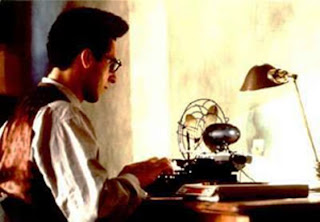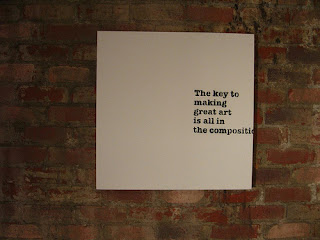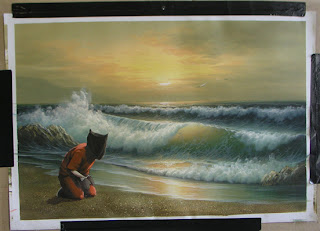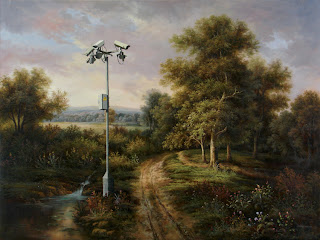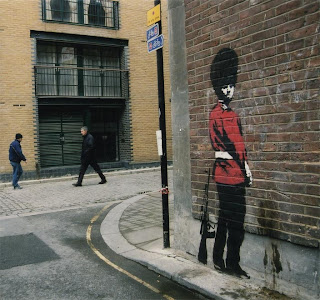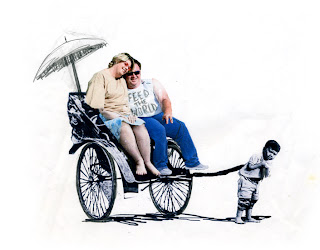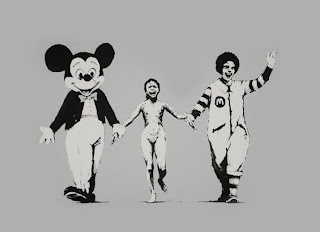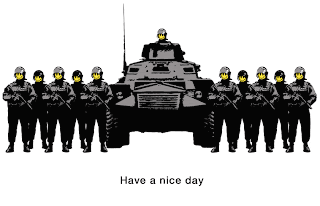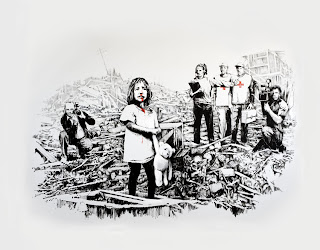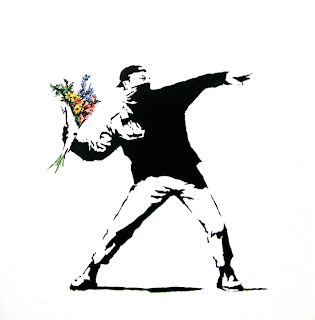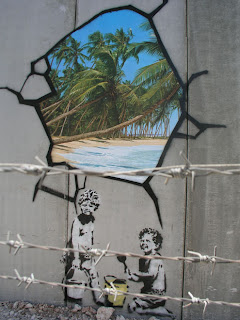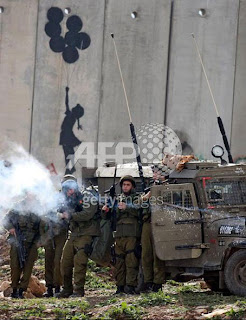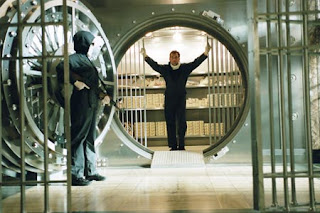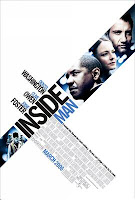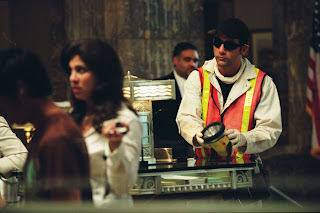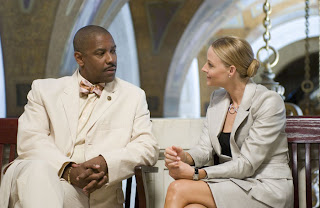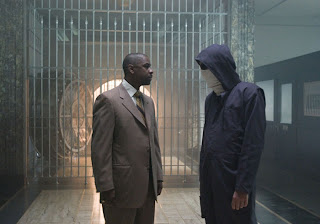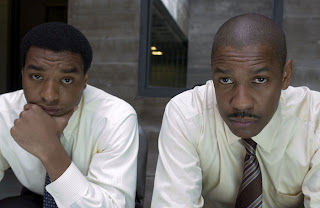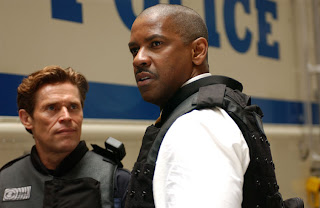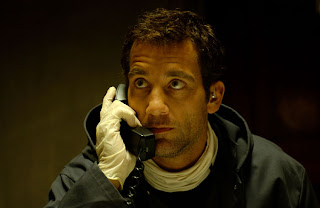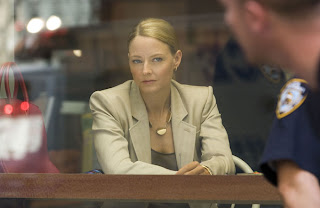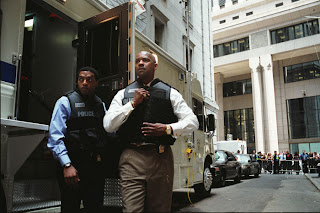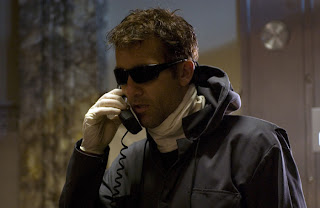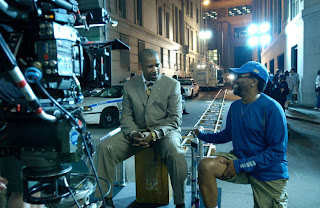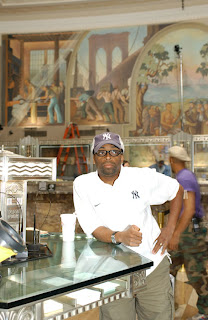Script Review – Billy Mernit’s “The Trouble With My Sister”
 I believe this is a first for the screenwriting world – a review of a Billy Mernit screenplay! Yeah, baby!
I believe this is a first for the screenwriting world – a review of a Billy Mernit screenplay! Yeah, baby!
The Trouble With My Sister, which was written by Billy from a story conceived by him and Bruce Perstein (the attached producers right now are Jim Pasternak and Richard Marshall) is a solid, fast-paced, visually-oriented, 109-page, 3-act, hard-liquor shot of black comedy horror. The script has been around for a little while. Billy described it as “the little indie that will not die… [the script] keeps getting periodically optioned, and a pair of indie prods are currently trying to get it setup as an under $3K job for me to direct no less (I'll believe that when I see it) but anyway -- I've always had affection for this twisted little pic…”
(Pssst… Billy Mernit uses Secondary Headings. Pass it on.)
In the story, we follow Terry and his sister, Madeline, who live in a creaking old domicile on Elm Street in a picturesque little town called Briar Hollow. Terry, 17, goes to high school. Madeline, 18, remains holed up in the house... day and night.
(Pssst… Billy Mernit keeps his action paragraphs down to 4 lines or fewer. Pass it on.)
In school, Terry falls in love with Judith. At home, Madeline decorates a dollhouse. In school, Terry has a typical teenage conflict with this territorial, testosterone-filled bully. At home, Madeline has this little habit of killing men who just happen to visit the house. Terry and Judith slowly head toward the inevitable consummation of their love. Madeline ensnares men with a scent of raw sex like bugs to a Venus Flytrap. A thief, by the name of Nathan, breaks into the house. Madeline discovers him and, umm, keeps him locked in the basement. He eventually escapes and... kills Judith’s father. Oooo...
(Pssst… Billy Mernit is all about cinematic storytelling. He writes the shots. Pass it on.)
Not even 5 pages into this script, I already knew exactly what this review would be about. Listen closely: I’m not sure where the idea originated or how it became so prevalent in the thinking of so many newbies like those on TriggerStreet and Zoetrope, but countless non-produced screenwriters believe (or have been told) that you cannot “write the shots” or “direct the director” in the action lines and that all you can do is setup the scene with a brief description and just write dialogue. That is total bunk.
If you study the great screenwriters and elite closers of modern cinema like Robert Towne or Shane Black or Lawrence Kasdan -- they WRITE THE SHOTS. They carefully guide the camera through the action lines without using camera angles. And let it be said that this is not offensive to directors – it is, in fact, INSPIRATIONAL when you read something that you can actually visualize as a real film. Writers are filmmakers, too, and we have to write our scripts like filmmakers.
And so, for me, Billy’s action lines were the highlight of his script. What elevates his screenplay above so many other black comedy specs I’ve encountered is the simple fact that his action lines exemplify the principle of visual storytelling and writing the shots.
Consider Billy’s opening sequence:
A DARK BEDROOM
Dimly visible, a bureau and a bed on thick carpet and… strange: the bed’s tilted at an unnatural angle; there’s something odd, slightly off about the dimensions of everything…
Sound of blinds being pulled up and the room’s suddenly flooded with morning sunlight, as:
A GIANT HAND with polished pink nails reaches into the room and pulls out the bed, holding it up for inspection. The front leg’s broken. The toy bed is whisked away for repair and now we see:
THE DOLL HOUSE
Its cutaway front reveals a beautifully appointed toy home in progress: miniature Americana with a purity that would be hard to find in the real world. Although, actually…
OUTSIDE:
A RED ROSE BUSH gleams under postcard-blue skies.
SOMEONE’S MORNING PAPER hits their driveway, the shadow of a bicycling newsboy passing by.
A SPRINKLER swooshes lazily back and forth, silver water splashing over a deep green lawn.
Notice how he guides the camera - first inside the dollhouse, then outside the dollhouse, then outside the real house, and then he moves the camera from the rose bushes over to a newspaper landing on a driveway and then around to a sprinkler. Of course, this sequence continues beyond what I shared with you here. He moves through the entire neighborhood to show us other locations and characters, but then he comes right back to the house where we started to meet Madeline in all of her sensual, twisted, murdering glory. Second, did you also notice how Billy was making a visual statement about façades by comparing the façade of the picturesque dollhouse with the façade of the picturesque neighborhood?
Consider this other moment, a very tense one, in which Nathan, the thief (who is being chased by cops) wiggles into the basement of Terry and Madeline’s happy domicile:
THE BASEMENT FLOOR – is dimly visible below, and something – a table? that he could conceivably climb down to.
Nathan holds his breath as he tries the window. Miracle of miracles, it squeaks open at his touch, unlocked.
Nathan wriggles through the window. Suspended half in and half out, he grabs his pillowcase booty and throws it to the floor behind him.
INSIDE THE BASEMENT
Nathan's feet swing wildly for a foothold, finding the table top at last. Except it's a thin piece of plywood atop two sawhorses ‑ and Nathan goes crashing right through it.
IN MADELINE'S ROOM UPSTAIRS
Madeline's hands are just placing a completed miniature couch matching the flower‑covered chair onto her card table as the muffled crash sounds from below.
IN THE BASEMENT
Nathan's face contorts in a silent scream of pain. He's crumpled in the corner, holding both hands around his ankle. Slowly, agonizingly, he straightens out the leg, then wincing all the way, tries to get up.
Sweet ‑ Je‑sus ‑ H ‑
Nathan puts weight on the foot. Big mistake.
(strangled hiss)
Christ!
With a moan he sinks back, clutching his ankle, as the sound of footsteps comes from directly above him. Nathan freezes. He follows the steps across the ceiling with a look of dread.
Suddenly remembering, he reaches inside his jacket, curses. In the dim light he can just barely make out:
HIS GUN ‑ glimmering faintly way across the floor, beyond a bulbous ancient boiler, just as
THE DOOR AT THE TOP OF THE STAIRS ‑ suddenly creaks open, filled by a dim silhouette.
Nathan holds his breath, cringing in the shadowy corner.
MADELINE'S HAND ‑ feels along the wall for the light switch.
Nathan can't look. He shuts his eyes. There's a loud click followed by silence. He opens his eyes.
Madeline's hand leaves the switch. The lightbulb is out.
Nathan watches her shadowy silhouette hesitate... withdraw. The door creaks shut.
Nathan's head falls back against the wall. He exhales a shaky breath, looks forlornly from the distant gun to his wounded ankle. His black shirt and pants are now a lint, leaf and grime‑dusted grey. He sighs.
Fabulous.
Notice how he starts with hints of long and medium shots of Nathan, and when the action intensifies, Billy describes close-ups of Madeline’s hand and Nathan’s eyes. And when it’s over, he reverts back to medium and long shots.
He does the same thing in this next example. He starts with descriptions of medium shots but when these two get intimate, he describes close-ups. We’re still in the basement, but this scene is shortly after Madeline discovered Nathan:
Nathan steels himself as the footsteps approach again...
The door creaks open. Madeline comes down the stairs, flashlight in one hand, a paper bag clutched in the other. She's smiling. Nathan can hardly believe his good fortune.
What ‑ they're not...? You...
What did you tell them?
Madeline kneels down by Nathan.
Nothing.
NATHAN
(ecstatic)
You're kidding. That's ‑ Wow.
I don't know how to thank you,
I mean all I can say...
Madeline rests her hand on his other ankle, the good one. She gives it a playful, tender caress, gently squeezes the calf. Nathan looks down at her hand, then at her.
That's not... It's the other one.
Madeline gives him a dreamy little smile.
Am I your baby?
Nathan stares at her. Then suddenly, as the whole situation sinks in, he can't help himself - relief, despair, the absurdity of it all ‑ Nathan starts to laugh.
Madeline draws back, her eyes fierce as she frowns at Nathan.
I'm sorry, it's just...
(a last chortle)
But... Are you my baby?
(MADELINE glares)
I think you're my angel of mercy
is what you are, and sweetheart...
(shaking his head)
I am so beholden to you, really, I...
She puts a hand on his bad ankle. Squeezes. He yelps.
Careful!
Madeline smiles. Terry's muffled voice comes from upstairs:
Madeline!
Madeline and Nathan both turn to the ceiling. Nathan, freaked:
Who's that?
Madeline gazes at the ceiling, thinking. She turns slowly back to Nathan, chewing her lower lip - gets an idea.
My boyfriend.
Nathan stares at her. She leans forward. With satisfaction:
He's a cop.
TERRY (O.S.)
Maddy, where are you?
Nathan's mouth hangs open, eyes wide.
But I'm going to take care of you.
Okay?
Nathan can only nod weakly. In a croak:
Okay.
TERRY (O.S.)
Madeline?
Madeline pulls a handful of thick pink yarn out of her paper bag. Before Nathan even comprehends what's happening, she's binding his hands behind his back.
What the ‑
Madeline clamps a hand over his mouth. Annoyed, whispering:
Quiet. Or I'll tell.
TERRY (O.S.)
Maddy?
Nathan's eyes dart frantically to the ceiling as Madeline removes her hand from his mouth. She yanks his hands behind him. She's quick and effective with her yarn.
There.
Nathan's hands are now tied behind him. Madeline reaches back into her bag, pulls out a pint bottle of brandy, uncaps it.
Now open...
She opens her palm to show him the capsules.
What -
MADELINE
For the pain.
She feeds him the capsules. Nathan gulps as she lifts the bottle to his lips. He drinks, coughs, eyes tearing.
Sssh...
Nathan's lips gleam, wet with liquor. Madeline leans over him and kisses him full on the mouth. It's deep, long, fierce. Then she rises abruptly and hurries up the stairs. Nathan can only stare dazedly after her. Is this really happening?
Following our study on exposition, I’m going to write at length about this topic of “writing the shots” and “directing the director.”
Okay, Billy, I have only one minor suggestion for you:
The lesbian cop, Nicole, flirting with Madeline felt like a setup without a payoff. The fact that Nicole was so willing to flirt with Madeline seemed to be an indication that, despite what we saw in the opening scene with her kissing her beautiful live-in lover, all was not well in that relationship. So why not let Madeline explore a relationship with Nicole? How much fun would that be? Why not make Nicole Madeline’s first true love, which would add to Terry’s overall stress? And this could also destroy Nicole’s relationship with her significant other. Thus, in the Third Act, Nicole and Marvin enter the house. Nicole sees Terry cradling Madeline’s body. She is stunned and drops to her knees, which would add another layer of tragedy to the ending. This relationship could also bring an interesting change in motivation in Madeline. First, she was killing to take out her anger about her father, but then she kills to cover up her sins because she’s now fighting for love, which neither she nor Terry can obtain because of their past sins. And I wonder if we should see Terry get arrested and dragged away from Judith. And then cut to their reunion after he’s released from prison.
Good job, Billy.
